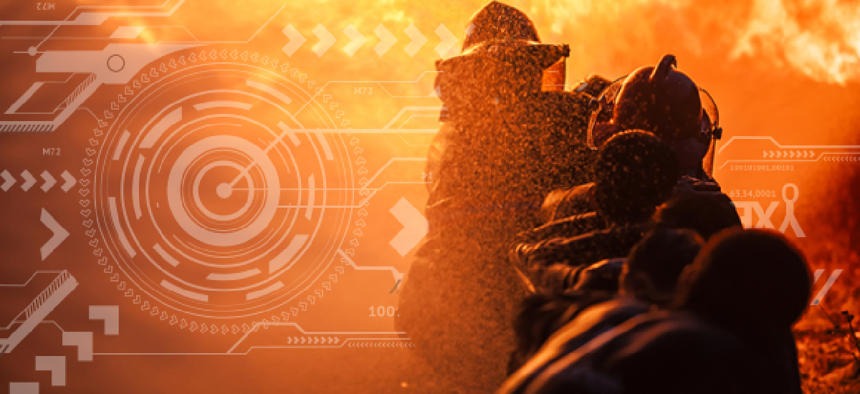DHS seeks better tech for first responders

The Department of Homeland Security's Science and Technology Directorate is looking for new solutions to 12 common challenges.
To speed the delivery of life-saving technologies to first responders, the Department of Homeland Security's Science and Technology Directorate has issued a broad agency announcement calling for white papers on technologies that address 12 common challenges.
Several of the topics included in the BAA address improving visibility. Firefighters and law enforcement need a hands-free way to detect the presence of victims or perpetrators when they're hidden in buildings or vehicles or when smoke and protective equipment obscures responders' vision. They also need a way to upload, access and share floor plans and safety data, such as the presence of hazardous materials. A 3D X-ray tool would give bomb technicians an instant picture of the threat they are facing, as would stereoscopic cameras mounted on bomb-defusing robots.
In public spaces, responders want a simple technology that provides real-time alerts when gunshots are fired and relays critical information ahead of their arrival on the scene via phones, tablets, computers or computer-aided dispatch. To ensure safety at crowded events, technology is need that can detect dangerous dynamics in individuals and groups such as a panicked people, overcrowding and the movement of a dense crowd in public locations. A technology that automatically geolocates and authenticates team members as they arrive at the scene would improve communications in chaotic situations, allow commanders to better allocate resources, limit redundancies and reduce accidents from friendly fire.
When it comes to a technology infrastructure, respondents need reliable cellular and radio communications in situations where communications quality and speed is degraded, such as tunnels, rural communities or large sporting events. Command centers and in-field staff alike require precision outdoor and indoor navigation and tracking tools that also allow incident planning and mapping data to be saved and shared in real time. With all the data feeds available to responders, they need solutions that filter out uninformative, unnecessary video details to reduce data overload.
To help keep track of individuals in federal detainment or corrections centers, DHS is looking for a real-time monitoring system that could track the biometrics and location of multiple detainees over a large area. The solution could also be used in large shelters for at-risk individuals during disaster, where monitoring the health of the shelter population can be difficult due to limited staffing.
DHS expects to make one award for each of the 12 topics. White papers are due May 1. Read the full BAA here.






